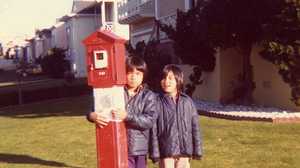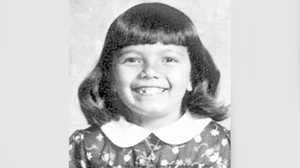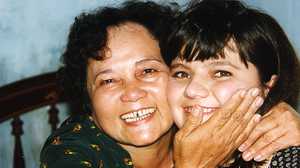Non-Governmental Organizations in Vietnam
Witnessing the war in Vietnam, many non-governmental and humanitarian groups were motivated to act. The United Nations tried to intervene, but was paralyzed by Cold War politics. With the United States supporting South Vietnam, and the Soviet Union supporting North Vietnam, both nations used their Security Council power to veto resolutions they thought would interfere with their own policies. In 1964, 1968, and 1970, Secretary-General U Thant tried to negotiate peace, but both the Soviet Union and the United States rejected his offers.
Other organizations were more successful in becoming involved. By 1970, 33 American NGOs, representing all sides of the political spectrum, were providing aid in Vietnam. Among them were CARE, Catholic Relief Services, International Voluntary Services, the American Friends Service Committee, and the Mennonite Central Committee. Who were some of the Americans who went to Vietnam in a non-military capacity, and what did they do?
Sandra Collingwood joined International Voluntary Services in 1967. Like all IVS volunteers, she was required to study Vietnamese language and culture. After being trained in Asian agriculture in the Philippines, Collingwood spent three months living with a Vietnamese family. Once her training was complete, Collingwood taught community development skills to villagers, as well as to a youth group that assisted orphans and refugees.
After the Tet offensive, Collingwood joined Catholic Relief Services. To her surprise, CRS did not require its staff to learn Vietnamese. They relied on interpreters, worked with the military, and avoided "dangerous" areas. CRS staff members were even required to live at a military compound. Whenever any Vietnamese individual (even a personal friend) wanted to visit a CRS staff member, he or she would have to undergo an interrogation before being allowed into the compound.
From 1973 to 1975, Linda Hiebert worked at a hospital operated by the Mennonite Central Committee in Nha Trang. Being pacifists, the Mennonites opposed the war, and ran their facility to treat Vietnamese civilians.
Hiebert worked primarily as a nursing instructor, but also translated information on generic drugs from English into Vietnamese. Once a week she visited a women's prison to provide basic medical care. Due to overcrowding and a lack of supplies, the prisoners suffered from conditions resulting from malnutrition or contaminated water, such as dysentery or parasites. Many prisoners also had sexually transmitted diseases. Other than giving medication, there was little Hiebert could do. "All I could do was put Band-Aids on serious problems," said Hiebert. The prisoners "had no access to medical attention except what I could provide."
The American Friends Service Committee, a Quaker organization, operated a rehabilitation center at Quang Ngai. Along with American staff members, the Center employed about 60 Vietnamese nurses, physical therapists, and limb makers, who were recruited from the local population. The AFSC intended to create a self-sufficient facility that would be able to function after the Americans' departure.
"We were absolutely neutral in regards to the political situation, and vowed to treat anyone who came to our center, as long as they were civilians," said Dot Weller, who worked there from July 1967 to October 1971.
Among the diseases encountered at the Quang Ngai rehabilitation center were typhus, bubonic plague, and polio. The bulk of the patients were amputees, who had been injured by land mines, shrapnel, grenades, or booby traps. There was also a ward for burn patients, who had been injured by everything ranging from cooking fires to napalm or phosphorous. Because the rehabilitation of burn victims is very difficult, even under the best of circumstances, the center, with its limited resources and staff, could do little to help them.
According to Marjorie Nelson, who worked at the center from 1967 to 1968: "Ten burn patients would have taken all our resources... with the same resources we could treat 50 or 75 orthopedic cases... The burn patients just had to stay on the ward and either get better on their own or die."
Catholic and Buddhist nuns operated many orphanages in South Vietnam. In 1967, an Australian woman, Rosemary Taylor, founded Friends for All Children, an independent, secular organization dedicated to caring for children without families and placing them for adoption overseas. From 1967 to 1975, Friends for All Children took care of approximately 3,000 children.
Sister Susan McDonald worked for Friends for All Children for two years starting in 1973. She was the only nurse for 100 infants at the New Haven Nursery in Saigon. These infants had been left at roadsides, churches, or markets. One baby boy had been left under a bus seat. The children were often very sick or severely malnourished upon arrival. On average, one infant died every two weeks.
McDonald and her staff frequently traveled to orphanages throughout South Vietnam to deliver food and medicine. They would often return to Saigon with infants that had no known relatives. McDonald would always ask if anyone had come for a child before bringing it back to Saigon.
As the North Vietnamese army approached Saigon, some mothers asked if they could leave their children at the New Haven Nursery. Because their policy was to accept only children without families, the staff always refused. The orphanage employed three women originally from North Vietnam, who assured worried mothers that the Communists would not harm their children.
The United Nations finally played an active role in Southeast Asia after the war, as thousands of Vietnamese "boat people" fled their country. Many were former South Vietnamese soldiers, farmers, or business owners, desperate to avoid Communist reeducation camps. Of the approximately 21,000 "boat people" who left Vietnam in 1977, an estimated 30 percent died at sea from the elements, starvation, or dehydration. Many others suffered rape or murder at the hands of pirates.
Typically, the refugees would be rescued by a sympathetic crew at sea, and then taken to Thailand, Malaysia, Singapore, Indonesia, the Philippines, or Hong Kong. In 1979, these nations announced that their refugee camps were overcrowded, and they would accept no more refugees unless Western nations promised to accept them.
U.N. Secretary-General Kurt Waldheim called a special conference in Geneva, which resulted in the United Nations High Commission for Refugees receiving funds to aid Vietnamese refugees. UNHCR also convinced the Vietnamese government to stop illegal immigration, and instituted its Orderly Departure Program. By 1995, almost 480,000 Vietnamese refugees had been resettled in the United States, and approximately 210,000 had been resettled in other countries.







